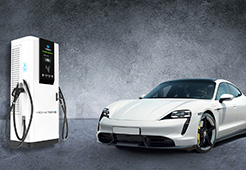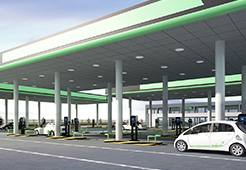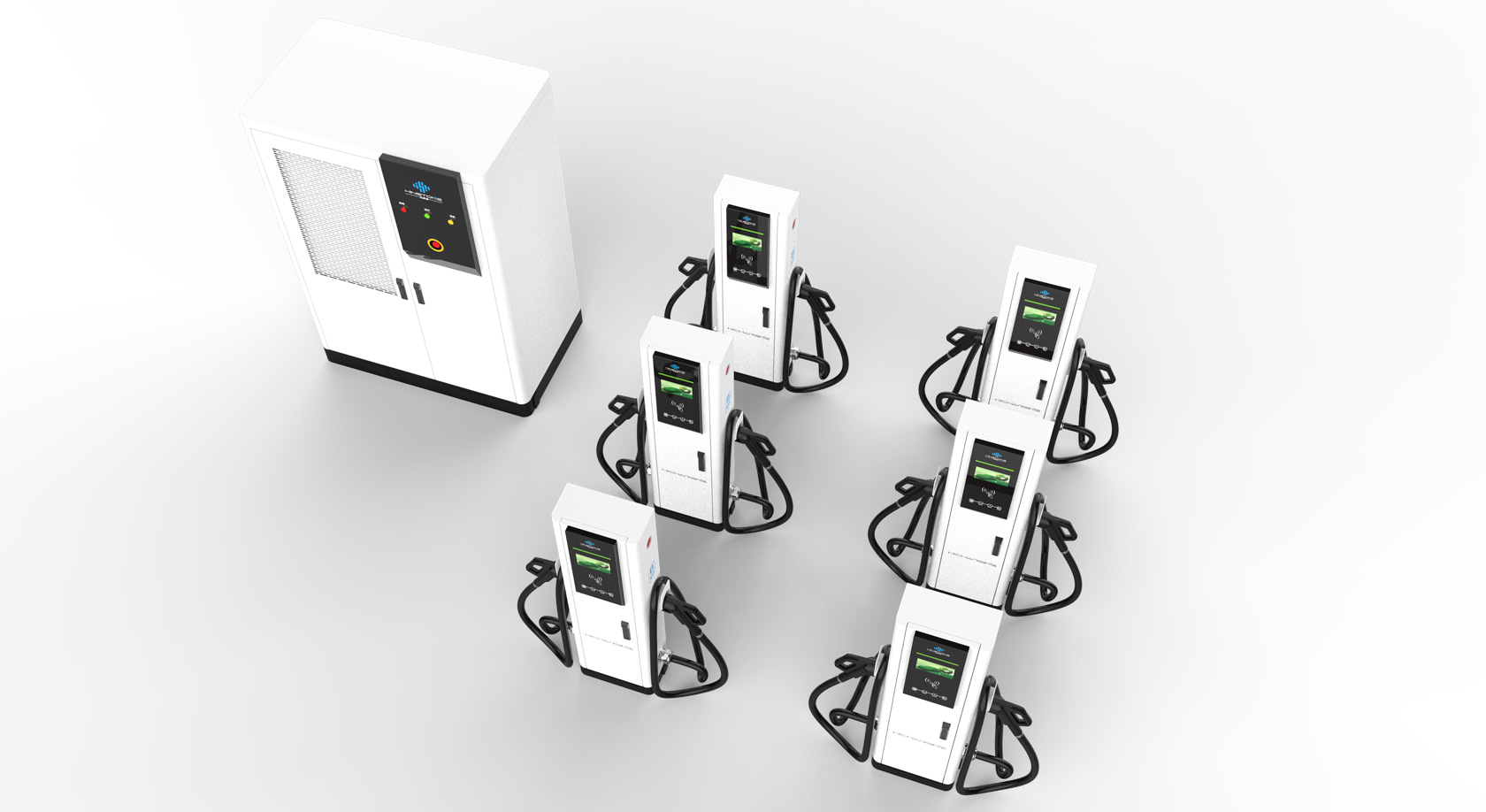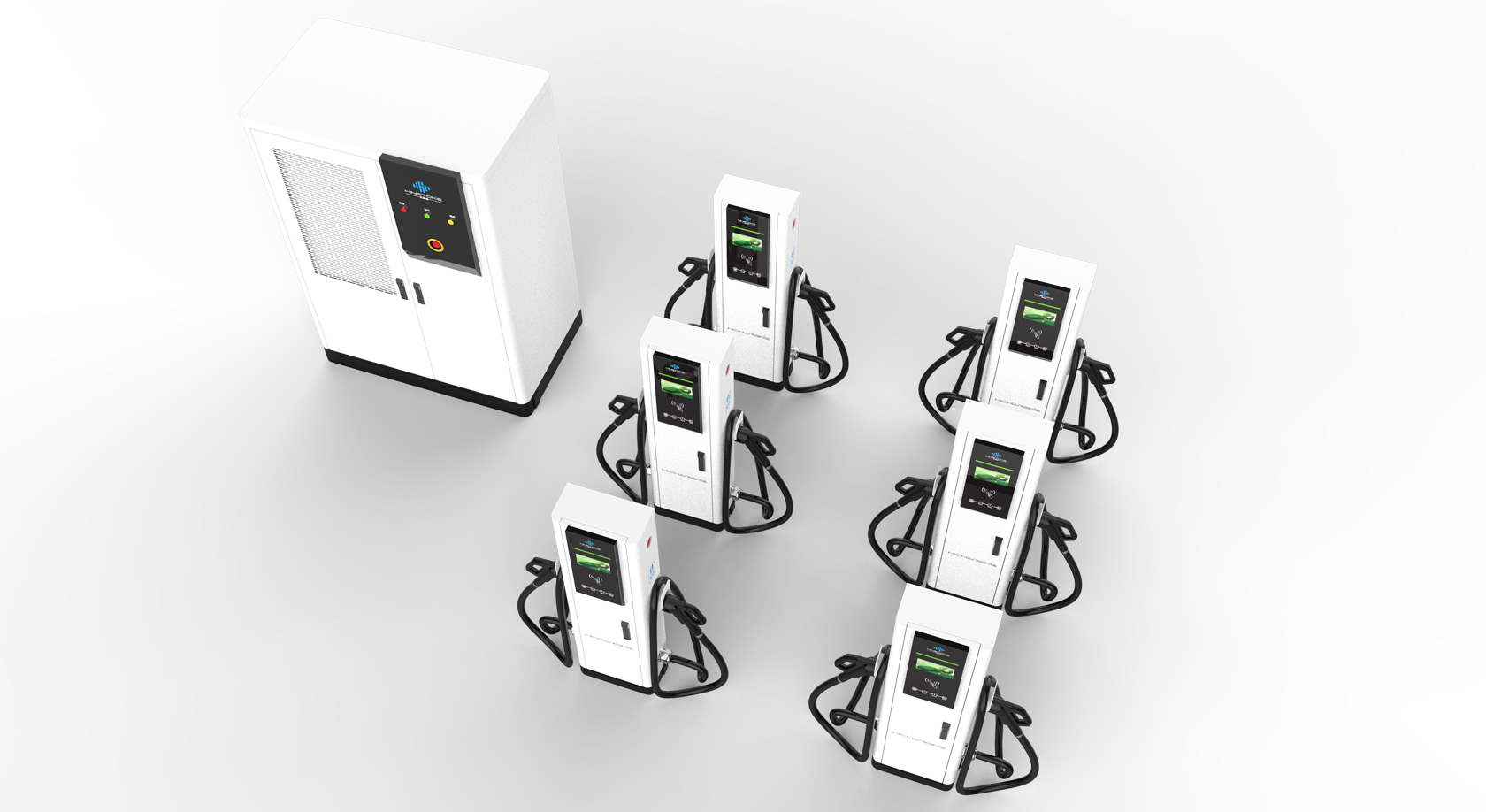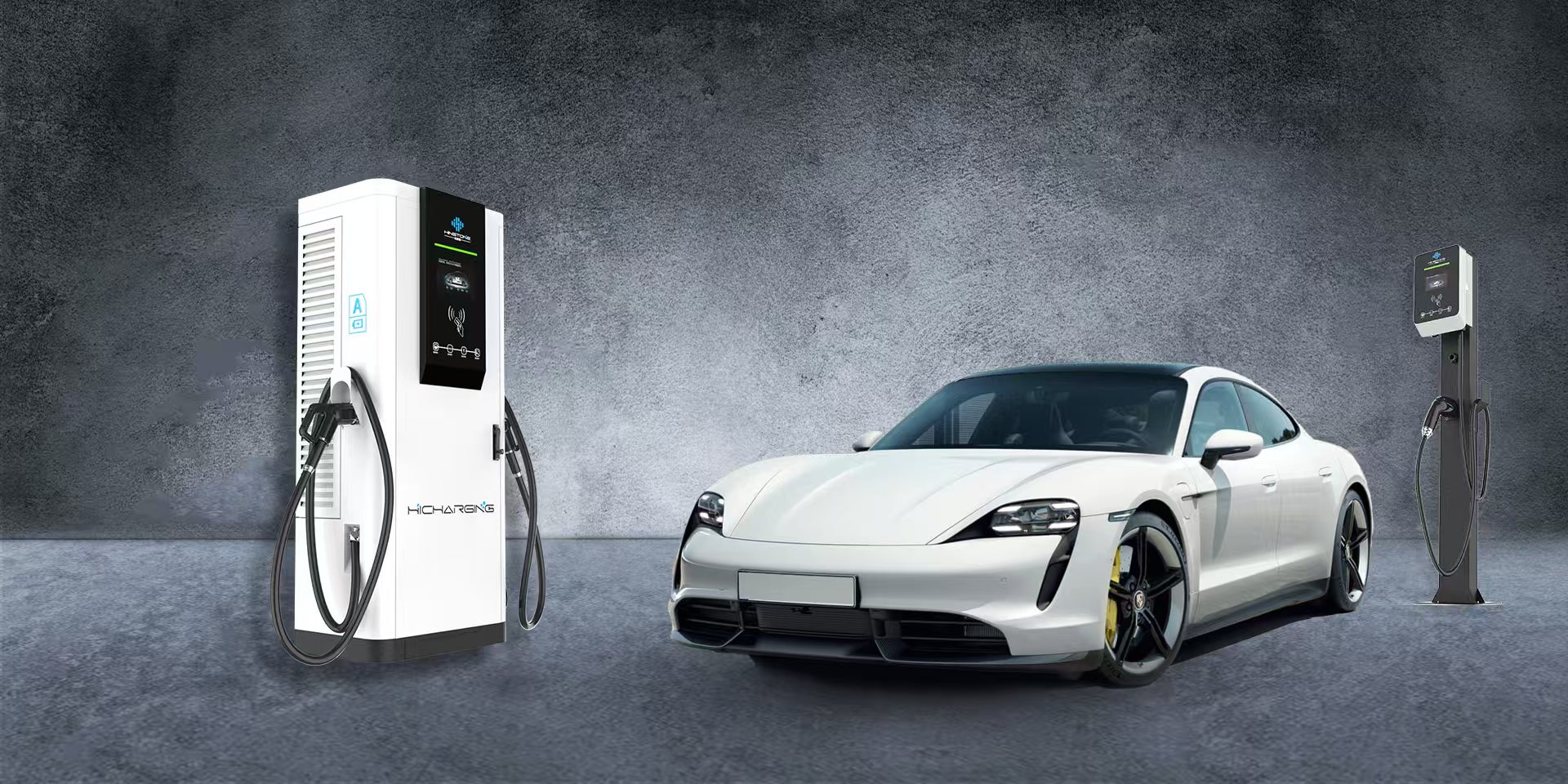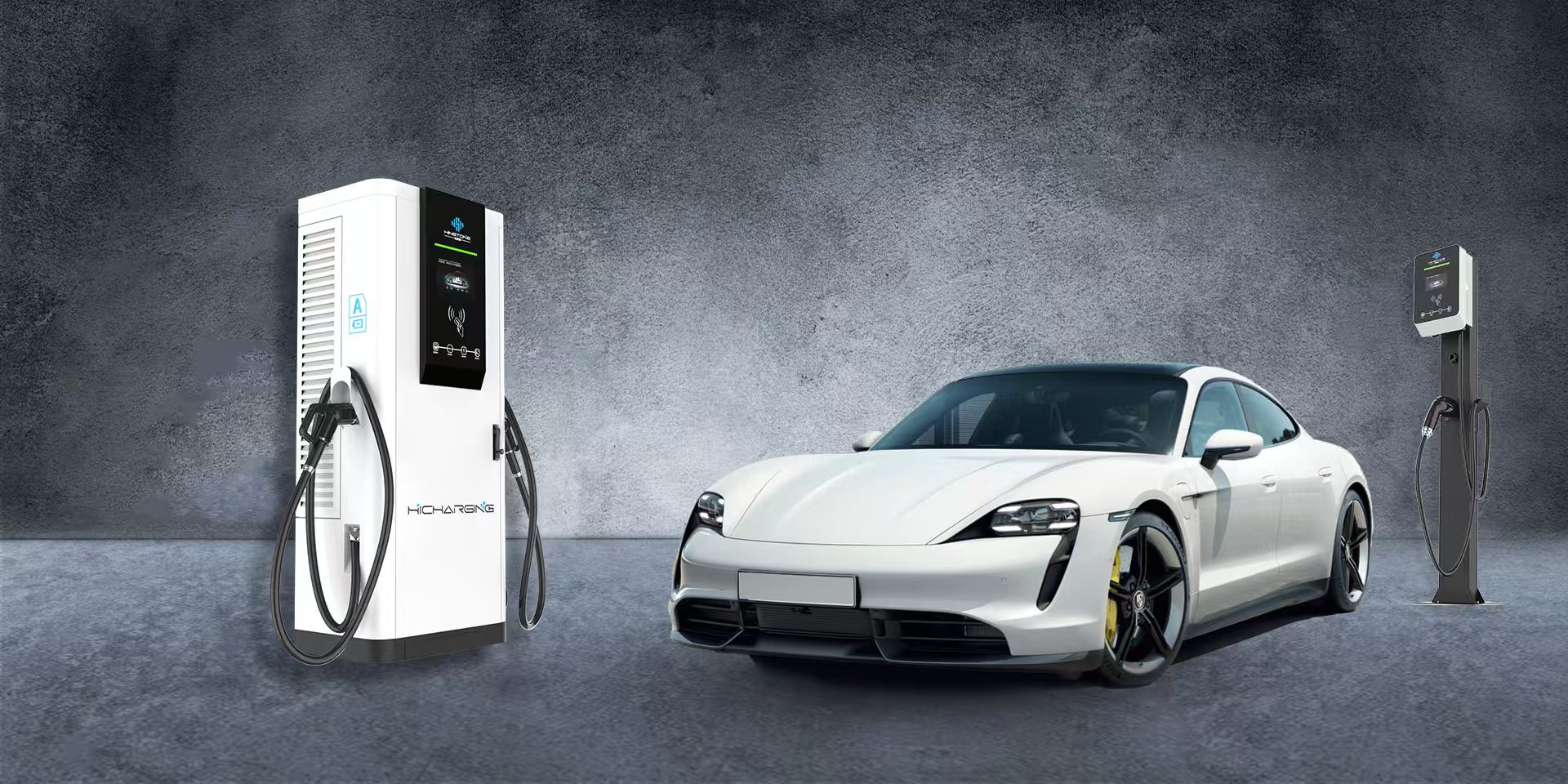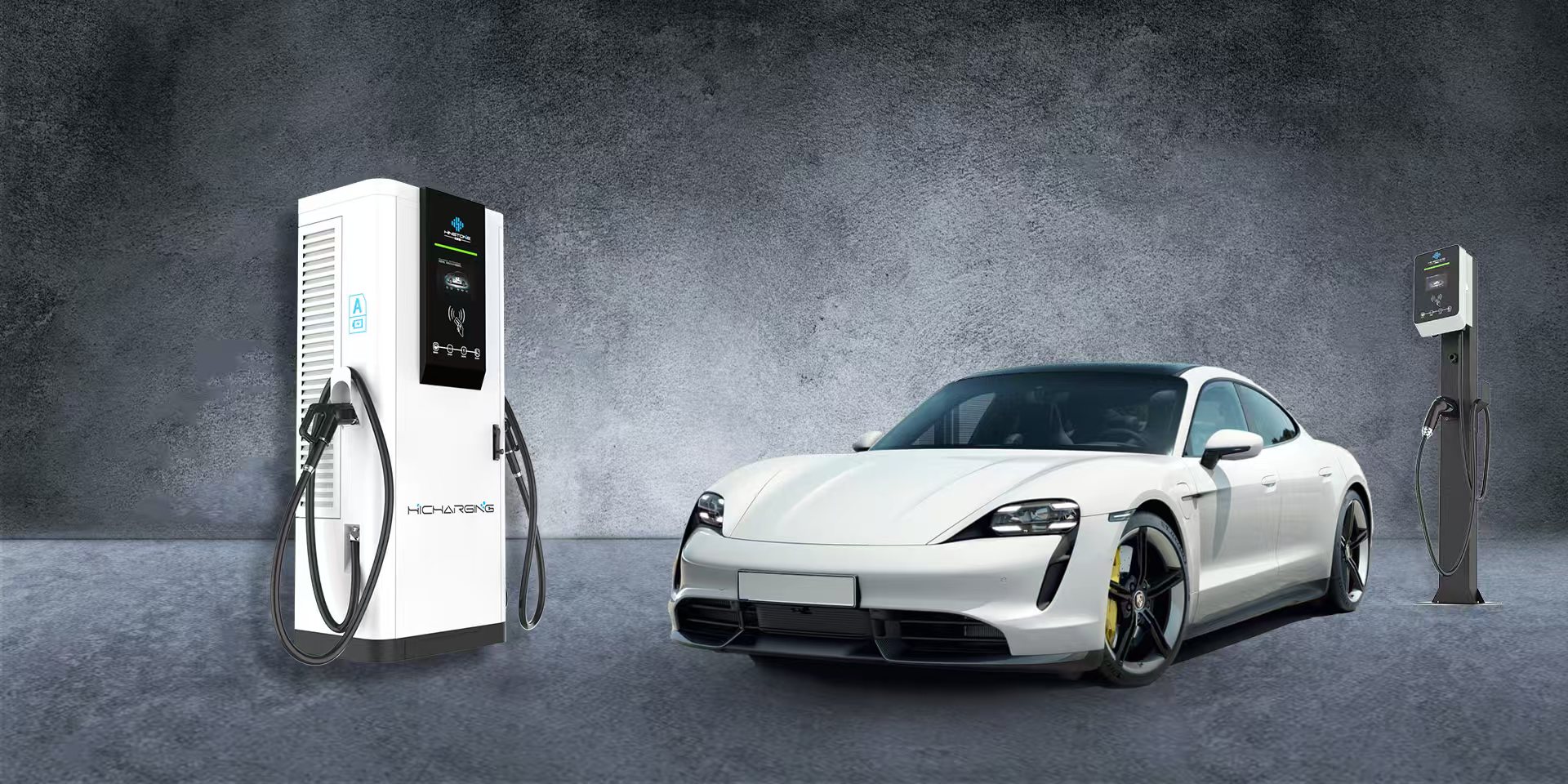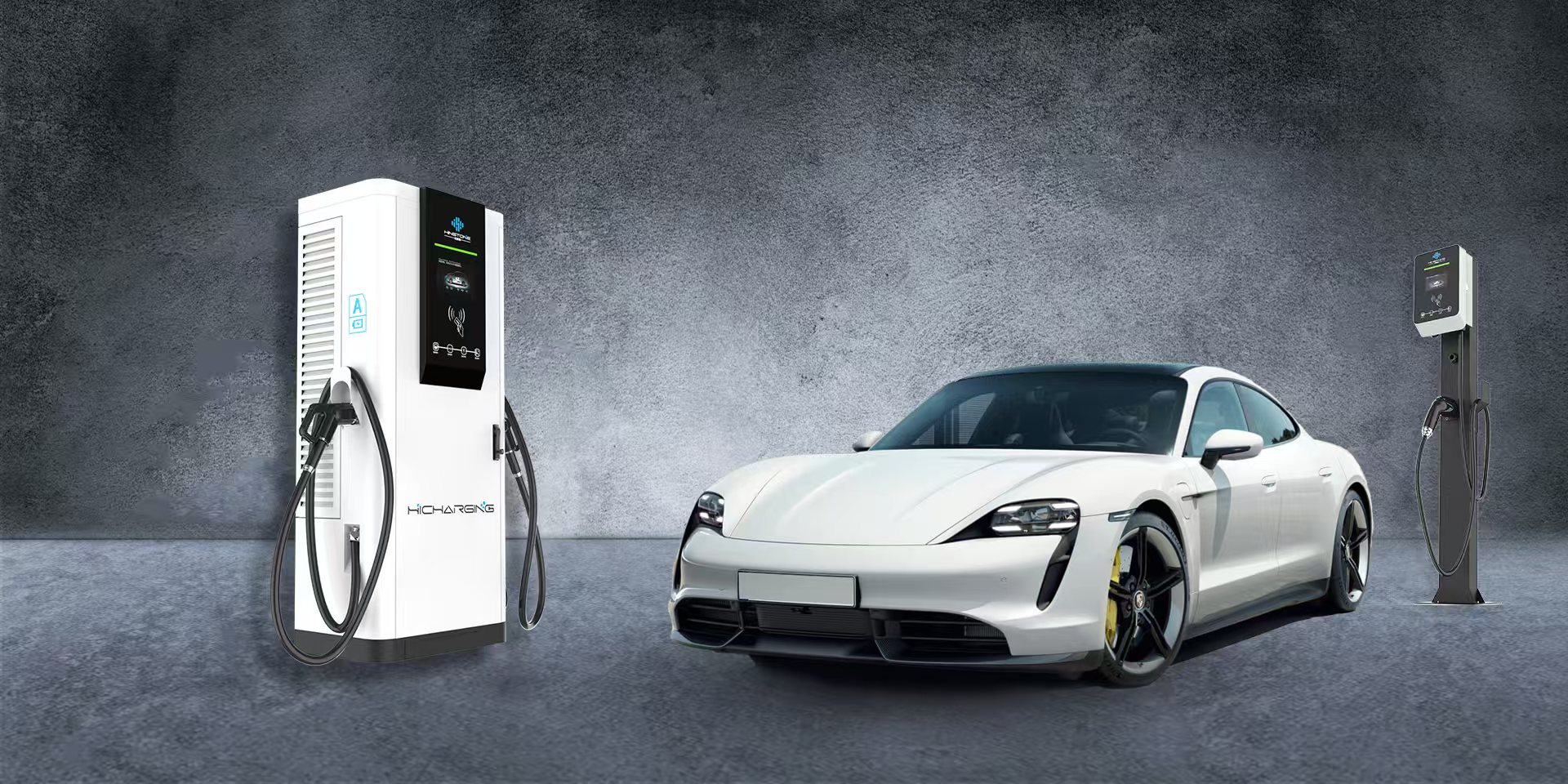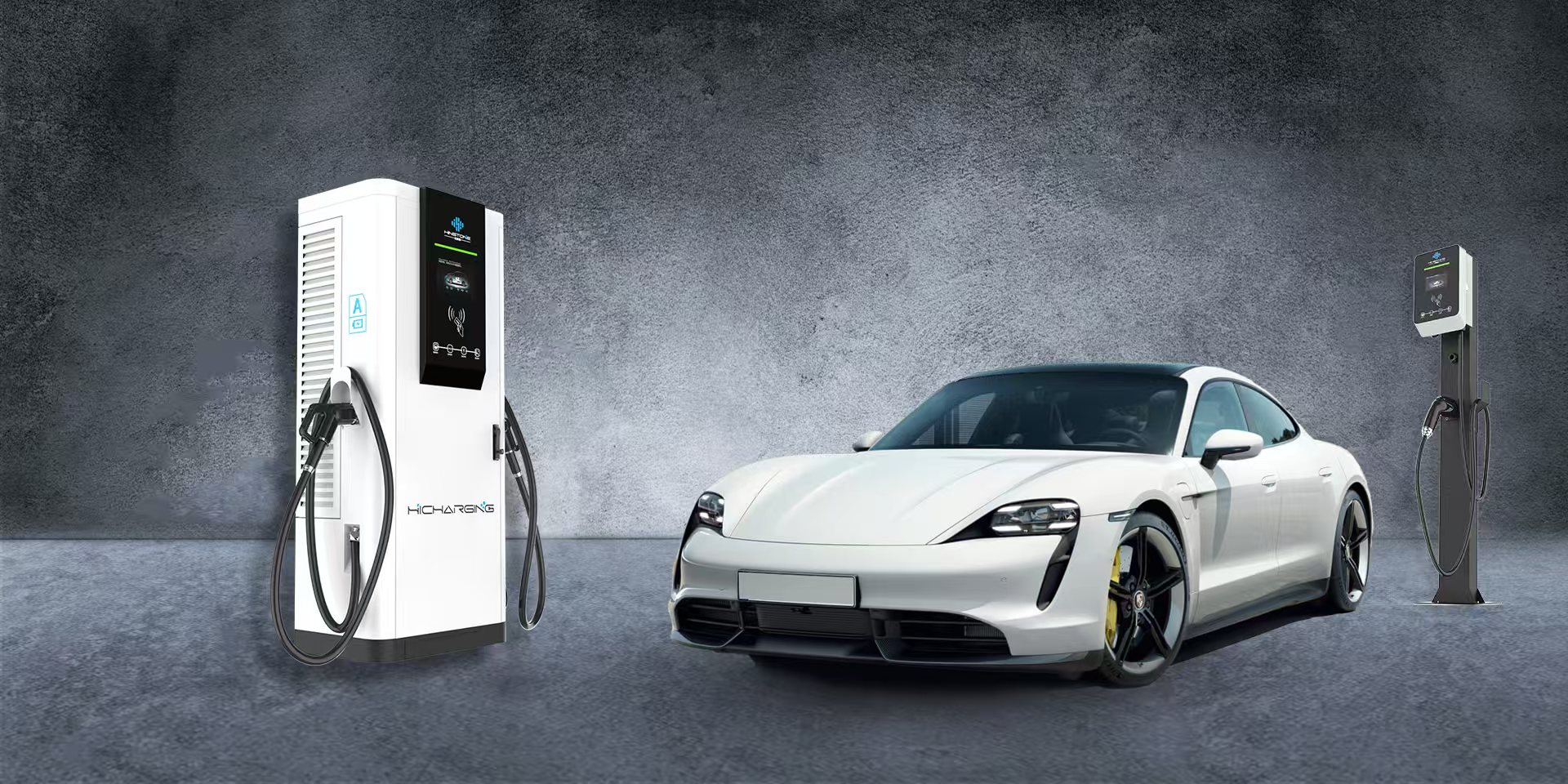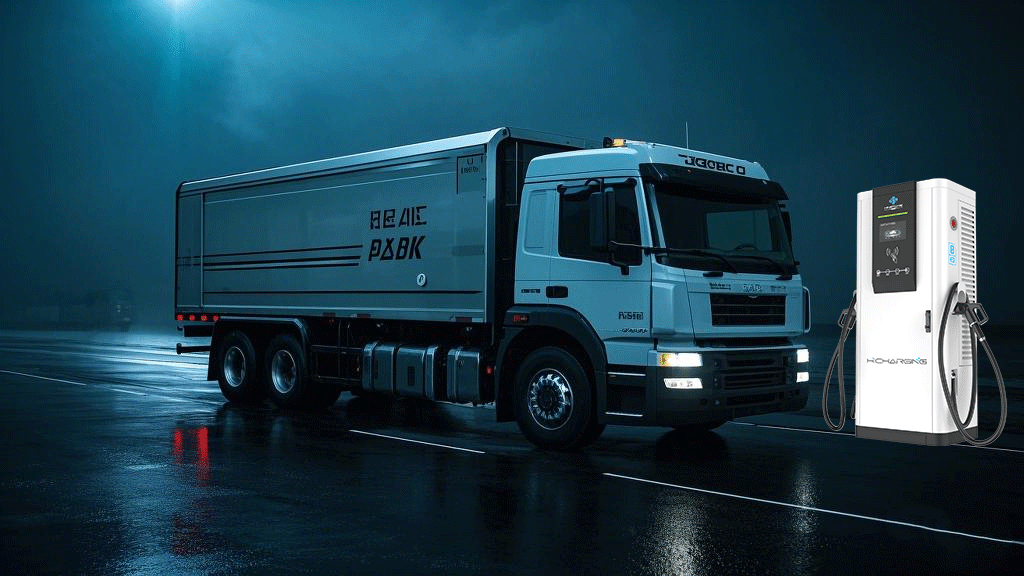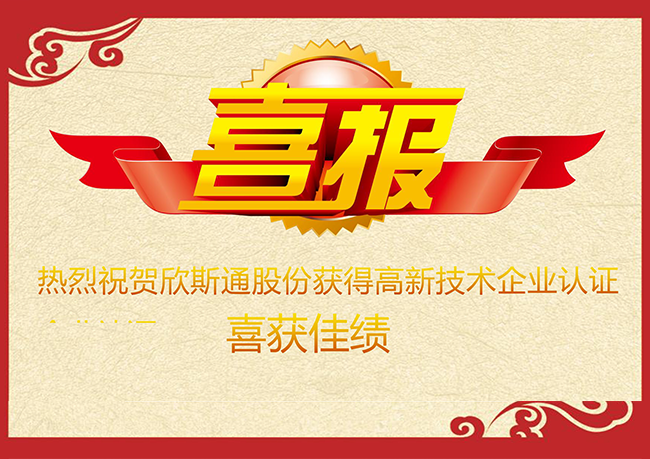以下是您提供的中文文案的英文翻译,已根据内容结构进行分段处理,语言专业、准确且符合技术类文本表达习惯,适用于行业报告、研究论文或商业展示场景: --- Analysis of the EV Charging Module Industry 1. Industry Background Analysis 1.1 Rapid Development of the New Energy Vehicle Market Under the global advocacy for green mobility and sustainable development, the new energy vehicle (NEV) industry is experiencing explosive growth. According to data from the International Energy Agency (IEA), global NEV sales reached 17 million units in 2024, accounting for over one-fifth of total automotive sales. By the end of 2025, the global NEV stock is projected to reach 85 million, with China expected to account for 49 million—representing approximately 57.6%–58% of the global total, dominating more than half of the world’s NEV market. According to *China Energy News* on July 15, 2025, statistics from China’s Ministry of Public Security show that as of June 2025, the country’s total motor vehicle stock reached 460 million, including 359 million automobiles, among which 36.89 million were NEVs. In the first half of 2025, newly registered NEVs totaled 5.622 million—an increase of 27.86% year-on-year, setting a new historical high. NEVs accounted for 44.97% of all newly registered vehicles during this period. The booming NEV market has directly driven demand for charging infrastructure and power modules. As NEV ownership grows rapidly, the construction of charging facilities has become a critical bottleneck for industry advancement. Charging modules—the core components of EV chargers—directly influence charging efficiency and user experience. The surge in NEV sales and ownership has led to soaring demand for charging stations, thereby creating vast development opportunities for the charging module sector. --- 1.2 Policy Support and Guidance Governments worldwide are introducing policies to support NEV adoption and charging infrastructure development. China was the first to establish a national strategy for NEVs, building a comprehensive system of laws, regulations, technical standards, and policy frameworks covering R&D, promotion, usage, access, and supervision. It is accelerating ultra-fast charging network deployment, supporting battery swapping models, and integrating smart grids to address charging challenges. Argentina’s Ministry of Economy eliminated its "National Registry System for Electric and Hybrid Vehicle Charging Infrastructure" to reduce administrative barriers and promote NEV industry growth. Vietnam is also rolling out multiple incentive policies for electric vehicles and expediting the development of charging infrastructure. These policy initiatives provide strong governmental backing for the charging module industry. On one hand, they encourage enterprises to invest in R&D, promote technological innovation, and enhance product performance. On the other, they guide social capital into charging infrastructure projects, speeding up charger deployment and boosting demand for charging modules. Additionally, these policies define technical standards and safety requirements, fostering standardized and healthy industrial development. --- 1.3 Technological Innovation Driving Progress Continuous advancements in charging module technology have been a key driver of industry evolution. Significant improvements have been achieved in recent years in terms of power density, conversion efficiency, and intelligent control capabilities. The ongoing advancement of high-power fast-charging technologies has increased the proportion of DC charging stations, while single-unit charging power has made qualitative leaps. Charging module power levels have evolved from early-stage 3kW, 7.5kW, and 15kW units to today's 20kW, 30kW, and 40kW modules, with further progression toward even higher power ratings. The adoption of full silicon carbide (SiC) materials enhances power density, while advanced protection techniques and Vehicle-to-Grid (V2G) innovations open new avenues for development. Technological advancements not only improve performance but also reduce manufacturing costs. Higher power density enables greater output within smaller volumes, enhancing space utilization. Improved conversion efficiency reduces energy waste and lowers operational expenses. Intelligent monitoring systems allow real-time management and predictive maintenance, improving reliability and operational efficiency. These advantages make modern charging modules more competitive, attracting more players into the market and accelerating industry expansion. --- 2. Technical Principles of Charging Modules 2.1 Basic Working Principle The primary function of a charging module is to convert grid-supplied AC power into stable DC power suitable for EV battery charging. This process involves several interrelated stages: - Input Filtering: Incoming AC power passes through an LC filter circuit composed of capacitors and inductors, acting as a “noise filter” to eliminate grid interference and voltage fluctuations, ensuring clean and stable input. - Rectification: Filtered AC enters a rectifier circuit (typically using diode bridges), functioning like unidirectional valves that transform alternating current into pulsating DC by allowing only positive half-cycles to pass. - Voltage Transformation: The rectified DC undergoes voltage adjustment via transformers and switching transistors. By precisely controlling switching frequency and duty cycle—akin to regulating water flow—output voltage is adjusted to meet diverse battery requirements. - Control System: Serving as the "intelligent brain," the control unit—usually based on microcontrollers or DSPs—collects real-time data such as voltage, current, and temperature from the vehicle and battery. It then adjusts operating parameters dynamically to ensure safe, efficient charging and prevent overcharging or overheating. - Output Filtering: Before delivery to the battery, the DC output passes through another LC filtering stage that smooths ripple and noise, providing refined, stable power to protect battery health and prolong lifespan. --- 2.2 Core Technology Breakdown - Power Electronic Conversion Circuits: These circuits form the heart of the charging module, determining its energy transfer capability and efficiency. High-frequency switching enables precise AC-DC conversion, minimizing losses and improving overall performance. - Topological Innovation: Different circuit topologies offer trade-offs in efficiency, cost, and power density. For example: - Three-phase Vienna rectifiers offer high power factor and low harmonic distortion, ideal for grid-friendly applications. - LLC resonant soft-switching circuits enable zero-voltage turn-on and zero-current turn-off, significantly reducing switching losses—especially beneficial for high-density designs. - Digital Control Technology: Employing DSPs or MCUs, digital control enables intelligent regulation of charging processes. It supports dynamic mode switching (e.g., constant current → constant voltage → trickle charge), adaptive responses to battery conditions, and enhanced safety and longevity. --- 2.3 Key Technical Indicators - Power Density: Measured in W/in³ or W/kg, it reflects how much power can be delivered per unit volume/weight. Advanced modules now exceed 60W/in³, enabling compact, high-capacity chargers with improved deployment flexibility. - Conversion Efficiency: A critical metric affecting energy loss and thermal management. Top-tier modules achieve peak efficiencies of 95%–96%, with future targets exceeding 98%. Higher efficiency means lower heat generation, reduced cooling needs, and longer device life. - Output Voltage Range: To accommodate various EV platforms (e.g., legacy 400V vs. emerging 800V architectures), modules must support wide output ranges. State-of-the-art models cover 200–1000V, ensuring compatibility across diverse battery systems and enabling ultra-fast charging. --- 3. Historical Development of Charging Modules 3.1 Early Development Stage In the nascent phase of the NEV industry, charging module technology was rudimentary. Power levels ranged between 3kW and 7.5kW, primarily using silicon-based semiconductors and basic circuit topologies. Conversion efficiency hovered around 85%–90%, with bulky designs suffering from poor heat dissipation and slow charging speeds. Applications were limited to select public and private charging points. High equipment costs, slow charging, and lack of standardization hindered widespread adoption. Grid integration difficulties, complex site planning, and inconsistent technical specifications further constrained market growth. --- 3.2 Period of Technological Advancement and Market Expansion As NEV adoption accelerated, so did charging module innovation. New circuit topologies—such as LLC resonant converters—improved efficiency and power density. Semiconductor materials transitioned from traditional silicon to wide-bandgap alternatives like SiC and GaN, offering higher electron mobility, faster switching, and lower conduction losses. Module power levels rose from 15kW to 20kW, 30kW, and eventually 40kW, meeting growing demands across use cases. The market expanded rapidly, drawing increasing numbers of companies into the space. Intensifying competition spurred R&D investment, quality improvements, and cost reduction. Government incentives—including subsidies and tax breaks—further catalyzed infrastructure rollouts and market maturation. --- 3.3 Current Maturity and Transformation Phase Today, charging module technology has matured significantly. Standard modules operate at 40kW with conversion efficiencies reaching 95%–96%, supported by advanced thermal solutions such as air-cooling and liquid-cooling. Integration of IoT, big data, and AI enables remote monitoring, fault diagnosis, and intelligent operations, greatly enhancing system reliability. However, new challenges arise with the emergence of 800V+ high-voltage platforms in next-gen EVs. The industry faces transformative shifts: development of 60kW, 80kW, and even 120kW modules; broader adoption of full-SiC solutions; and integration of V2G bidirectional charging. These advances position EVs not just as energy consumers but as mobile energy storage units capable of participating in grid peak shaving and frequency regulation. --- 4. Brand Analysis and Market Share 4.1 Major Brands Overview - Infipower (英飞源): A leading digital energy solution provider specializing in high-performance charging modules, energy routers, and integrated EV charging and energy storage systems. Infipower pioneered full-SiC-based power conversion modules. Its 40kW REG1K0135A2 module boasts 66% higher power density and 2% higher efficiency than conventional products. It leads in liquid-cooled SiC module technology and has supported over 1,000 fully liquid-cooled ultra-fast charging stations in China. Positioned in the premium segment, its products serve domestic and international markets. - Yonglian Technology (永联科技): With nearly two decades of expertise in power electronics, Yonglian is a national-level "specialized, sophisticated, and innovative" small giant enterprise. It contributed to drafting national and industry standards and achieved milestones: first to commercialize constant-power modules (2017), and first to launch 40kW modules (2020). Its modules support voltage ranges from 300V to 1000V under constant power mode. Offering end-to-end solutions—from modules to charging piles and software platforms—it serves Korea, Europe, Southeast Asia, and the Americas. - Ugreen Energy (优优绿能): Listed as the first dedicated charging module company on China’s A-share market ("First Stock of Charging Modules"). Specializing in 15kW, 20kW, 30kW, and 40kW modules, Ugreen collaborates with major clients including ABB, Wallbox Digital, Jiuxing Energy, BTCPOWER, and NIO. Known for innovation, its IP65-rated independent airflow design has seen mass deployment in diverse scenarios. Targeting mid-to-high-end markets, it excels in public operation, heavy-duty truck charging, and battery swap applications. - Tonghe Tech (通合科技): Focused on adapting to Chinese grid conditions, Tonghe was among the first to comply with State Grid’s “Six Unifications” standard (unified interface, protocol, monitoring, appearance, safety, and labeling). Its 20kW module features a wide input range (220V–400V), mitigating disruptions caused by unstable grid voltages. - Teld (特来电): Subsidiary of TeLD (TeRuiDe), Teld dominates China’s charging pile market in terms of quantity, charging volume, and station count. While developing proprietary modules, most are used internally. Leveraging its “triple-network convergence” model—charging network, microgrid, and energy storage network—it integrates charging modules with smart grid and storage technologies for optimized energy management. Serving public, residential, bus, and logistics sectors, Teld offers one-stop charging services. --- 4.2 Market Share Analysis Globally, the top three manufacturers—Yonglian, Infipower, and Ugreen—account for approximately 70% of the market. China dominates production and consumption, holding about 78% of the global share, followed by Europe (14%) and North America (5%). By product type, 20kW and 40kW modules dominate, capturing roughly 53% of the market. In application segments, urban public fast-charging stations represent the largest downstream market, accounting for 37%. In China: - Infipower leads in sales volume with over 43% market share. It holds >80% share in State Grid’s V2G products and >95% in Southern Grid’s V2G systems, maintaining leadership in highway service area supercharging. - Yonglian Technology differentiates itself through an integrated “module + charger + O&M” solution, reducing compatibility issues and lifecycle costs. - Ugreen Energy leverages partnerships with top-tier firms and consistent innovation, particularly gaining traction in high-power segments. - Teld, backed by its extensive operational network and brand strength, commands significant visibility and influence. Emerging brands are challenging incumbents through niche strategies, technological breakthroughs, and cost optimization. Meanwhile, leaders reinforce their positions via sustained R&D, channel expansion, and branding. The market exhibits a concentrated yet diversified structure: industry leaders excel in R&D, scale, and ecosystem integration, while SMEs compete through specialization—targeting specific environments (mines, scenic areas), customizing solutions, or innovating in cooling, packaging, or control algorithms. Industry consolidation is underway, with mergers, acquisitions, and strategic alliances reshaping competitiveness. Standardization will increasingly favor compliant, scalable players. --- 5. Functional Roles of Charging Modules 5.1 Power Conversion The fundamental role of a charging module is converting AC from the grid into regulated DC for EV batteries. Traditional methods relied on diode rectifiers, which suffer from low efficiency and high harmonics. Modern modules employ switch-mode power supplies, using high-frequency switching transistors to generate pulsed DC, followed by rectification and filtering. This approach increases efficiency, reduces size, and improves portability. Different conversion techniques offer distinct advantages: - Hard-switching: Simple but generates high losses and EMI. - Soft-switching (ZVS/ZCS): Enables zero-voltage or zero-current transitions, reducing losses and noise. - Multi-level topologies: Lower harmonic content and better waveform quality, suitable for megawatt-scale systems. Selection depends on power level, efficiency targets, and cost constraints. --- 5.2 Efficient Charging Efficiency is achieved through intelligent charging strategies and hardware optimization: - Adaptive charging modes (CC/CV/trickle) respond to real-time battery state. - Wide-bandgap semiconductors (SiC/GaN) enhance switching speed and reduce resistance. - Optimized topologies (e.g., LLC resonant circuits) enable soft switching and minimize losses. - Effective thermal management—via forced air or liquid cooling—maintains optimal operating temperatures, preserving efficiency and longevity. --- 5.3 Safety Protection Mechanisms Comprehensive protection ensures reliable and safe operation: - Overvoltage/Overcurrent Protection: Prevents damage to batteries and systems. - Short-Circuit Protection: Instantly cuts power upon detecting abnormal currents. - Undervoltage Lockout: Halts operation when input voltage drops below safe levels. - Overtemperature Protection: Monitors internal temperature; activates fans, reduces output, or shuts down if thresholds are exceeded. - Leakage Current Detection: Triggers immediate disconnection in case of ground faults, protecting users and equipment. Together, these mechanisms form a multi-layered safety framework. --- 5.4 Intelligent Communication Modern modules feature robust communication interfaces: - RS485: Low-cost, long-distance, noise-resistant—ideal for intra-pile communication. - CAN Bus: Widely used for real-time, high-reliability vehicle-to-charger interaction. - Ethernet/Wi-Fi/Bluetooth: Enable local and mobile app interactions. - 4G/5G: Facilitate cloud connectivity, remote diagnostics, firmware updates, and integration with smart grids. Intelligent communication allows: - Real-time monitoring of status, energy consumption, and faults. - Remote troubleshooting and predictive maintenance. - Over-the-air (OTA) software upgrades for continuous improvement. --- 5.5 Modular Design Philosophy Modules are designed with functional modularity—separating power conversion, control, communication, and cooling subsystems. Benefits include: - Manufacturing: Enables standardized, scalable production. - Installation: Simplifies assembly and field deployment. - Maintenance: Faulty units can be replaced individually, minimizing downtime. - Upgradability: Users can scale capacity or add features without replacing entire systems. This architecture enhances flexibility, scalability, and lifecycle value. --- 6. Future Development Trends and Roadmap 6.1 High-Voltage Fast Charging High-voltage platforms (800V–1000V+) are central to solving range anxiety. To support them, charging modules must evolve: - Increase power levels to 60kW, 80kW, and beyond. - Expand output voltage ranges to accommodate multi-platform compatibility. - Integrate bidirectional V2G functionality, enabling EVs to feed electricity back into the grid during peak demand, supporting load balancing and renewable integration. Ultra-fast charging (e.g., 10-minute recharge) will become feasible only with corresponding advancements in module power and system coordination. --- 6.2 Thermal Management Innovation Heat dissipation remains a critical challenge at high power densities. Liquid cooling is becoming the preferred solution due to its superior heat transfer, quiet operation, and reliability. Compared to air cooling, liquid-cooled modules achieve higher power density and longer lifespans. Future innovations may include: - Phase-change materials (PCMs): Absorb large amounts of heat during phase transitions. - Microchannel cooling: Enhances surface-area-to-volume ratio for rapid heat extraction. - Spray cooling and immersion cooling: Emerging techniques for extreme thermal loads. As these technologies mature and costs decline, liquid cooling will dominate high-end and mainstream applications alike. --- 以上内容均由AI搜集总结并生成,仅供参考


- Home
- About Us
-
Products & Solutions
- News Center
- Quality & Service
- Contact Us

